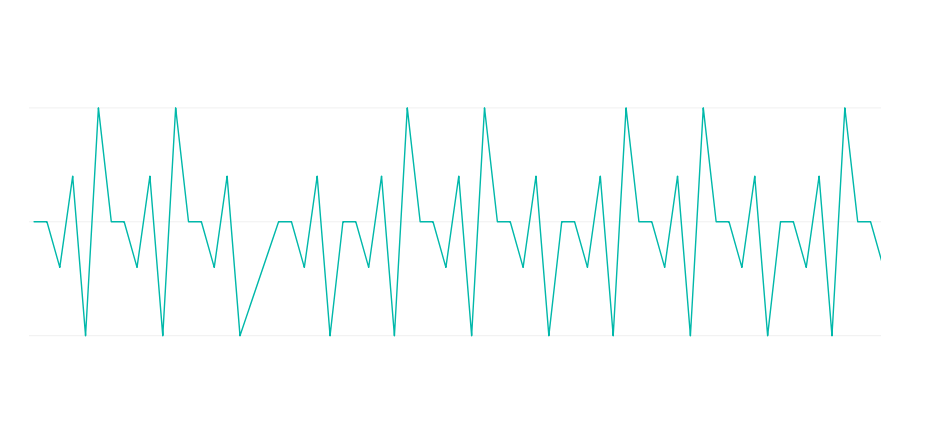What is the Heartbeat of Your Project Telling You?
Cost performance index (CPI) is widely used to influence and support project management decisions around the world but what is it really telling us? Does a CPI of 0.90 immediately mean the project’s health is poor? Or does it fall into an acceptable range? The answer isn’t that straightforward. There are additional criteria that should be evaluated to ensure that decisions are being made based on the complete picture and will depend on the CPI operating range. Firstly, let’s remind ourselves of the definition of CPI.
What is the Cost Performance Index (CPI)?
Cost performance index (CPI) also known as earned vs. burned, measures the financial effectiveness and efficiency of a project. It represents the amount of completed work for every monetary unit spent. CPI is expressed as a ratio calculated by diving the budgeted cost of work completed (BCWP) or earned value, by the actual cost of the work performed (ACWP) or burned costs.
As an example, if a project has an earned value of $30,000 but burned costs were $40,000.
CPI = EV / AC = 30,000 / 40,000 = 0.75
If the ratio has a value higher than 1 then it indicates the project is performing well against the budget. A CPI of 1 means that the project is performing on budget. A CPI of less than 1 means that the project is over budget.
It seems straightforward, however, the definition above doesn’t consider that the CPI will experience natural fluctuations over time and that there is an acceptable range in which to expect it to do so. To work out the acceptable range, it is helpful to understand why CPI fluctuates.

Why Does Cost Performance Index (CPI) Fluctuate?
Depending on the timescale being used to analyse cost performance, it is expected that a natural fluctuation will be observed. This fluctuation is a result of the many factors that influence cost performance on a project, such as people, equipment and weather. These factors change over time leading to peaks and troughs in cost performance. For example, an employee would not be expected to perform at 100% efficiency for the whole day. Employees may experience boosts of energy that allow them to achieve more than expected at certain times which then balances out during periods where fatigue results in lower performance. These fluctuations are natural and create a series of peaks and troughs known as the operating range.
What is the Cost Performance Index (CPI) Operating Range?
Each project is unique but it will still have an acceptable cost performance index operating range. The operating range is determined by how many unpredictable factors will influence your project. A project-based inside a factory where the environment is well controlled will have a much narrower operating range (1.05>X>0.95), whereas an extremely unpredictable environment such as off-shore construction will naturally have a much higher range (1.50>X>0.5).

These ranges should be agreed to by the project management team before work commences on a project and should be based on criteria such as past project performance, industry benchmarks and expert opinion. Once agreed, project managers should work within this range focusing on making improvements to efficiency to return the project to a CPI of 1.00. For example, moving the break room closer to the work front could lead to less downtime walking between these locations. If CPI falls outside of the agreed range, this should signal a serious problem to the project management team and undergo additional investigation.
What Does it Mean if the Cost Performance Index (CPI) Lands Outside the Operating Range?
Although natural fluctuations in performance are normal over time, values that land outside the operating range can be a cause for concern. If the CPI is too high/ low, it indicates that something besides inefficiency is impacting the project performance.

If a project is experiencing lower than expected cost performance, it normally indicates that the scope of your project has changed or is creeping. The lower performance is a symptom of additional time and material being used on out of scope work. For example, your original scope includes building 30 linear meters of a perimeter fence around a facility, however, when crews start construction no confirmation of the perimeter length was made, and crews built a fence 10 meters longer than contracted to do.
On the other end of the spectrum is an over-performing project. Often overlooked because they are achieving more value than expected for every monetary unit spent. This is bad practice and over-performing projects should be evaluated just as thoroughly as underperforming ones.
It is important to evaluate over-performing projects because if you are not spending as much as expected it can indicate that areas of the scope of work are being missed, which could end up being costly in the future to complete or repair. For example, a cast-in-place concrete foundation missing half the rebar will need to be de-constructed to reinstall the missing items, ultimately costing more in the long run. Alternatively, if there is no scope being missed on an over-performing project, it can lead to a negative reputation within the industry and cost future work because clients will expect that budgeted costs are inflated past their actual value.
Conclusion
Cost performance indices are a great indication of project health but also contain additional information that can be unlocked by engaging a project controls professional. Project controls professionals can design the procedures and systems required to capture project performance on intervals that are reasonable for your scope of work. They can determine the desired operating range and indicate when aspects of your project aren’t performing as planned. Also, project controls professionals can deal with the low-level detailed views of data that can then be reported up to project managers concisely. This will ensure that the reports distill the information in a way that can accurately influence decisions and enable a safe and successful project delivery.
If you’d like to know more about your project CPI, or if you are looking to improve your capability, get in touch!
You can call on +44 (0)20 7404 4826 or email us at info@logikalprojects.com
Or you can use the contact us form here.






